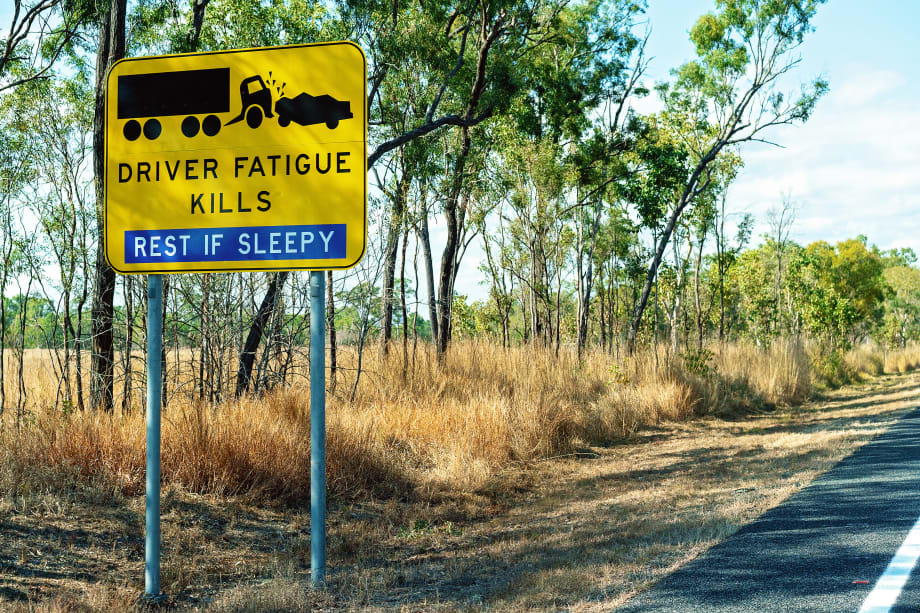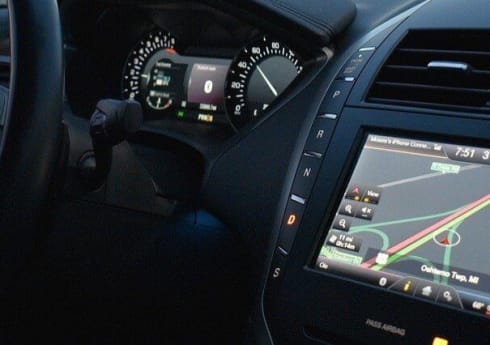Driver Fatigue and Road Safety: Causes, Consequences and Solutions
Driver fatigue is a serious and real problem leading to thousands of road accidents each year. These accidents have a roughly 50% higher chance to result in death or serious injury. Tired drivers react slower, suffer from reduced awareness and attention, and their ability to control their vehicles is impacted.
According to police statistics, 2% of all crashes in Britain are caused by fatigue from driving. Of these, up to 4% are fatal. It is estimated that 10% to 20% of all road crashes in the world are a result of driving tired.
Keep an eye on your drivers and make sure they don’t drive tired. Telematics is a complete solution that can help you to stay on top of many issues, including driver’s fatigue.

Driving tired? Here are some facts!
- Driver fatigue contributes to as many as 4% of road deaths. Though experts estimate the number is much higher.
- 1 in 8 drivers in the UK admit having fallen asleep at the wheel. That’s 13% of drivers!
- 37% of UK drivers admit having been scared they’d fall asleep when driving because of tiredness.
- Almost half of UK drivers say they drive after getting less than 5 hours of sleep.
- Driving after a period of 17 hours of not sleeping endangers yourself and others. Your driving skills will be impaired, no matter how good a driver you are. Your reaction time will be slower. You’ll suffer from reduced attention and awareness.
- If you are driving tired, you can fall asleep for a few seconds without even realising or remembering it. This is called “microsleep”.
Main factors contributing to driver fatigue
Drivers who are tired are more likely to get into an accident. Crashes caused by driving tired can usually happen:
- On long, monotonous journeys, usually on motorways
- After sleeping less than usual or simply not enough
- After long working hours or night shifts
- Between 2 a.m. and 6 a.m.
- Between 2 p.m. and 4 p.m. especially after having a heavy meal (or even an alcoholic drink)
- If taking medicines that cause drowsiness
There are many factors that contribute to driver fatigue and that can increase the risk of having an accident related to fatigue from driving.
The most common factors leading to driver fatigue are:
- Lack of sleep or sleeping unwell. This could be due to various life events, like having a new baby, or due to stress, busy schedules, or even due to sleep disorders like insomnia or sleep apnoea.
- Stress. Difficulty to focus, tiredness or getting easily distracted are symptoms of stress. Nowadays, stress is a common problem faced by many, without even knowing it. Unfortunately, it can impact our lives more than we are aware.
- Irregular sleep. This will usually happen to people who work night shifts or are rapidly switching from day shifts to night shifts. The body clock doesn’t have enough time to adjust.
- Medication. There is some prescription or over the counter medication that can cause drowsiness and carry warnings that driving or operating heavy machinery is not advised after taking these drugs.
- Driving for long periods of time. Driving for more than 2 hours straight can impair your ability to concentrate and you can react slower to hazards. The longer you drive, the longer your breaks should be. To this effect, standards regarding driving hours have been implemented for HGV drivers. To protect you and the others traffic participants.
Signs of fatigue from driving
Fatigue doesn’t just happen. There are usually clear signs and symptoms. Unfortunately, many people choose to ignore them and continue driving tired.
If you ever feel like yawning a lot, you have difficulty focusing or feel your eyelids heavy, stop and take a break. Never underestimate the dangers of driving tired.
Fatigue from driving occurs more often that we care to admit. Let’s start being more responsible and stop ignoring the warning signs.
iCompario tip:
Safety is a high concern for any business. Did you know there are certain solutions to make sure your drivers don’t get tired behind the wheel? A good telematics system includes cameras, allowing you to monitor your drivers and helping to avoid incidents.
Drivers most at risk
Drivers who drive for a living – HGV drivers, delivery van drivers, company car drivers – are most at risk from driver fatigue. They usually spend many hours behind the wheel and fatigue from driving occurs more often than for other drivers. There are specific regulations that apply for the safety of these drivers. Read about HGV driving hours.
Young drivers tend to suffer more from driver fatigue. This is mainly because young drivers often feel strong and more empowered, and will often ignore the warning signs of tiredness.
Another category of people at risk of driving tired is professionals who work long shifts and alternate day and night shifts, like doctors or nurses.
Tips to avoid driving tired
Don’t underestimate the risks of driver fatigue. Falling asleep at the wheel can be fatal. Here are some tips to help you avoid driving tired:
- If possible, avoid long journeys during the night.
- Make sure you are fit to drive and well rested, especially before embarking on a long drive.
- Plan your journey ahead. Plan your breaks. Try to take at least 15 minutes break every 2 hours.
- If you feel sleepy and your eyes are getting heavy, stop and rest. Always pull over in a safe place, not on the hard shoulder of a motorway.
- If you have a very long journey ahead, plan to stop and sleep overnight.
- Take the train or bus if possible, especially if you’re feeling tired.
- If you suffer from sleep disorders like sleep apnoea, talk to your GP and don’t drive until your symptoms are under control.
Solutions for HGV drivers

The first thing HGV drivers and fleet managers need to do is understand and follow the standards around HGV driving hours.
Companies can easily find solutions to ensure that their drivers follow these rules and drive responsibly.
A good telematics platform can boost the performance of your company drivers and support the business. It comes with many options, including driver monitoring.
The function of driver monitoring in telematics allows you to track how carefully a driver handles the vehicle. It allows to check if the drivers follow the HGV driving hours, if they’re driving aggressively or inattentively, or if they’re driving tired.
The system may film the driver to check his attention levels, using AI to check for a wandering gaze or the frequency of his blinking, which can indicate tiredness.
All this data and more is transmitted via a SIM card to a cloud-based telematics platform. The fleet manager can then view it from any internet-connected PC.
Want to know more about how telematics can benefit your business? Read our business guide to telematics.
Find the best telematics solution for your business
Telematics can give you a bird’s eye view of your fleet at all times, making it quick and easy to manage all your drivers. You can deal with breakdowns or accidents immediately and even check the driver dashcam footage or speeding incidents from your mobile phone. It helps you keep your drivers safe and boost your business.
As a free comparison site, iCompario can help you find the right system for the right price.



